Make sure to join my list for Weekly Tips and Recipes to Your Inbox
16 Elegant Flower Bed Garden Borders Edging Ideas
After refreshing my porch with a few summer touches, like a fresh coat of paint, I stepped back and realized something felt unfinished.
My front flower bed, though lush with blooms and lacked definition. That’s when I decided it was time to add proper garden borders to bring everything together.
But figuring out what edging to use was more confusing than I expected. I wanted something attractive, long-lasting, and low-maintenance, something that wouldn’t look cheap or let grass creep in.
I’d already made the mistake last year of digging a natural edge and topping it with mulch. It looked tidy for a few weeks…until the rain came, the grass took over, and mulch started spilling onto the walkways.
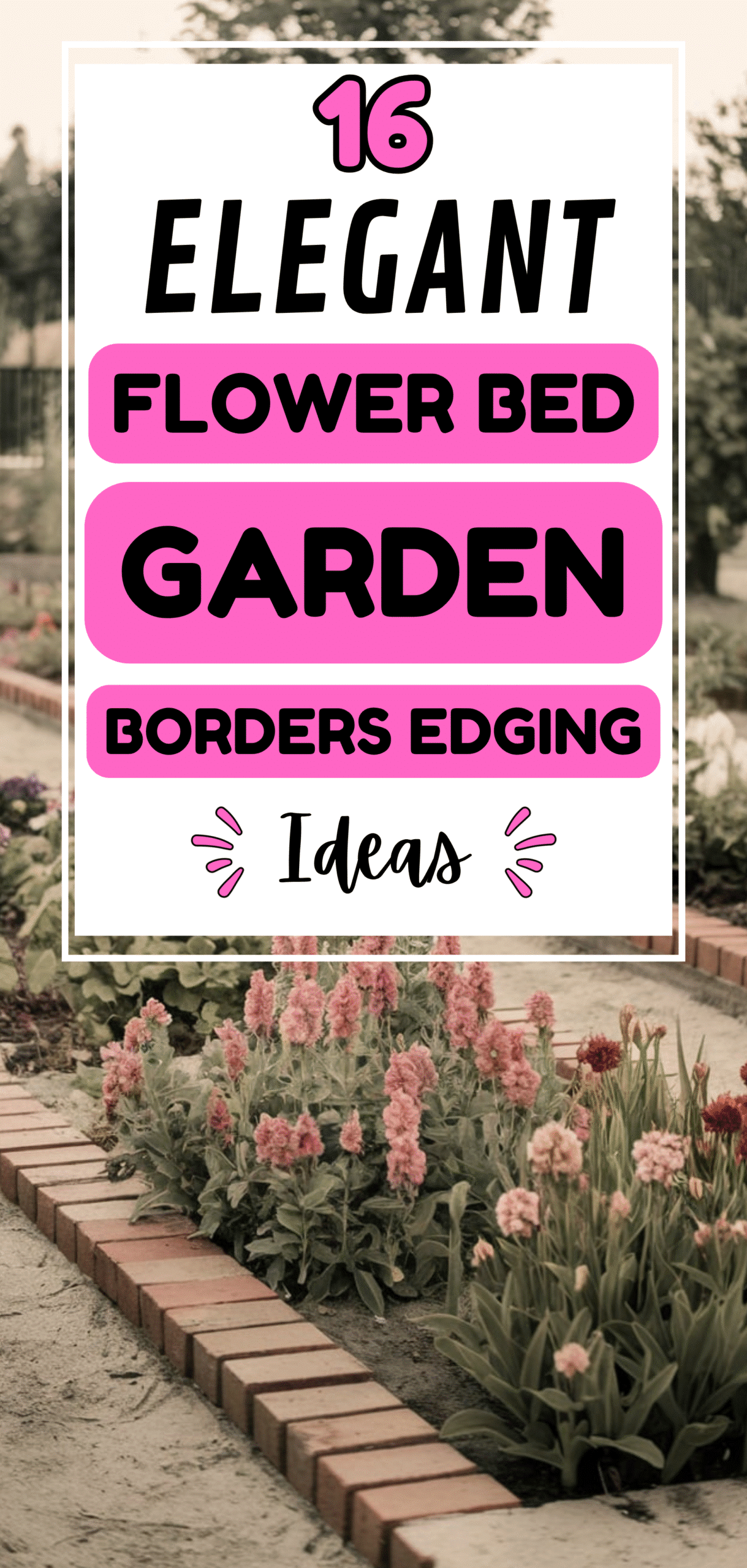
At first, I thought maybe the edging style wasn’t the issue, maybe it was the grass. But then I realized it was really about matching the right border to the space. Stone and paver ideas started popping into my head, especially for paths that lead around shrubs or to the mailbox.
I researched flexible recycled edging, admired neat gravel paths, and even considered living borders like low shrubs or flowering perennials. Friends swore by electric edgers and weed barrier cloths, but I knew I didn’t want to be constantly fighting nature just to keep things neat.
And then there were the surprise guests, burdock plants popping up along the edge, probably dropped by birds or wind, adding even more to my to-do list.
Eventually, I landed on a layered approach that combined beauty with function. Clean, curved garden borders using natural stone gave the bed definition, while a buffer strip of gravel caught stray mulch before it reached the sidewalk.
We spaced plants so they’d fill in but not overwhelm, and placed taller shrubs like hazelnut and serviceberry in the background to create height and structure.
It’s now not just a flower bed, it’s a focal point. Adding proper edging didn’t just solve my grass and mulch problem; it completely transformed the front of the house.
16. Natural Stone Edging for Rustic Elegance
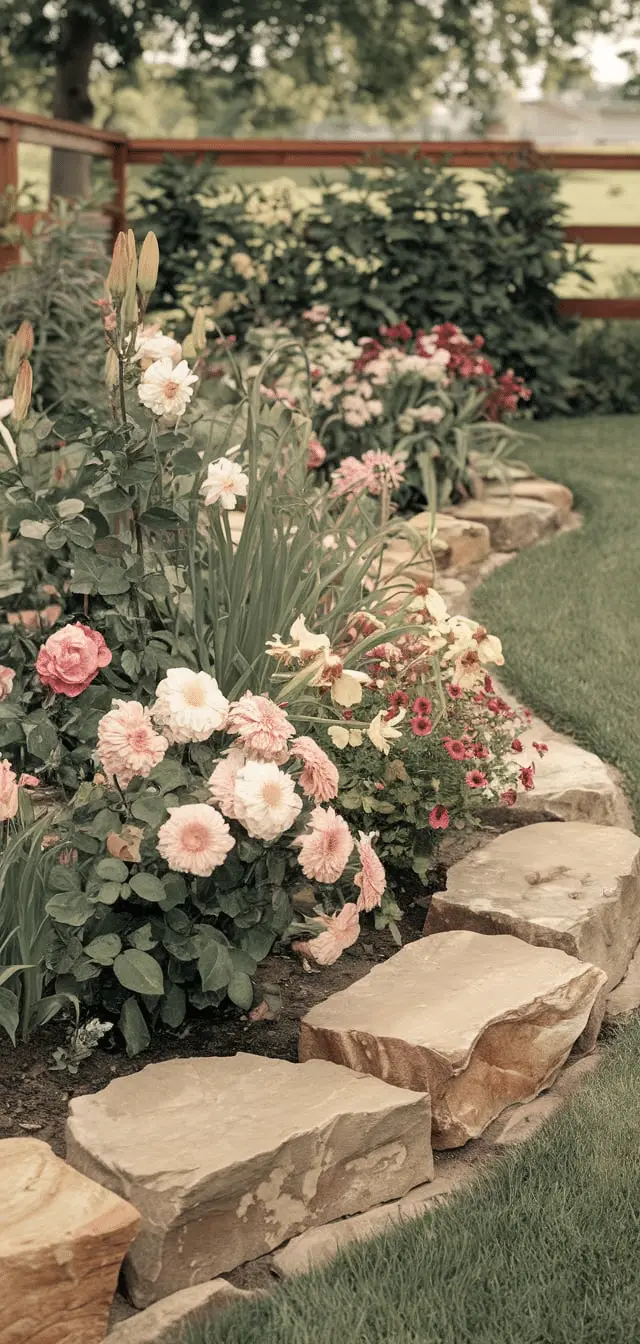
Natural stone, such as fieldstone or slate, offers timeless charm. It blends organically with gardens while creating a strong physical boundary.
Tips:
- Use flat stones for easier alignment
- Dig a shallow trench and set stones into compacted sand
- Best for cottage, woodland, or transitional gardens
15. Brick Garden Border for Classic Symmetry
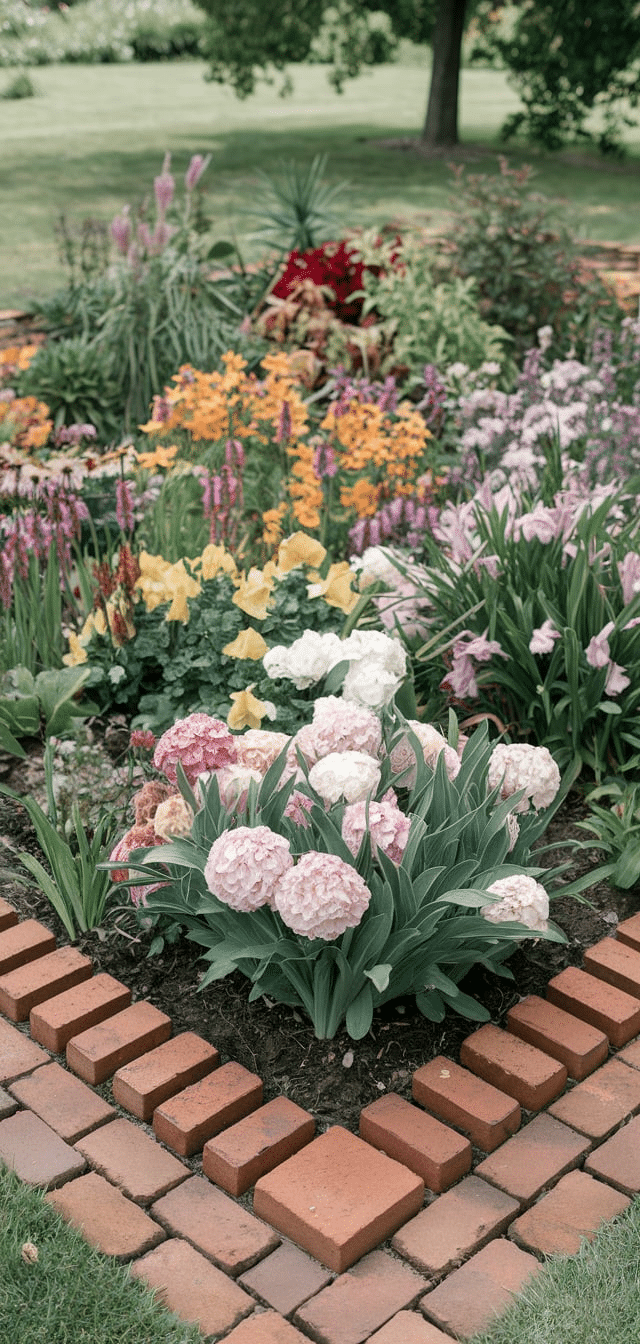
Bricks provide uniformity and a formal look. Lay them flat, on-edge, or diagonally for varied visual impact.
Tips:
- Use reclaimed bricks for sustainability and aged character
- Mortar optional: dry-laid bricks allow drainage
- Match the brick tone to the architectural elements for cohesion
14. Steel or Metal Edging for Sleek Modern Lines
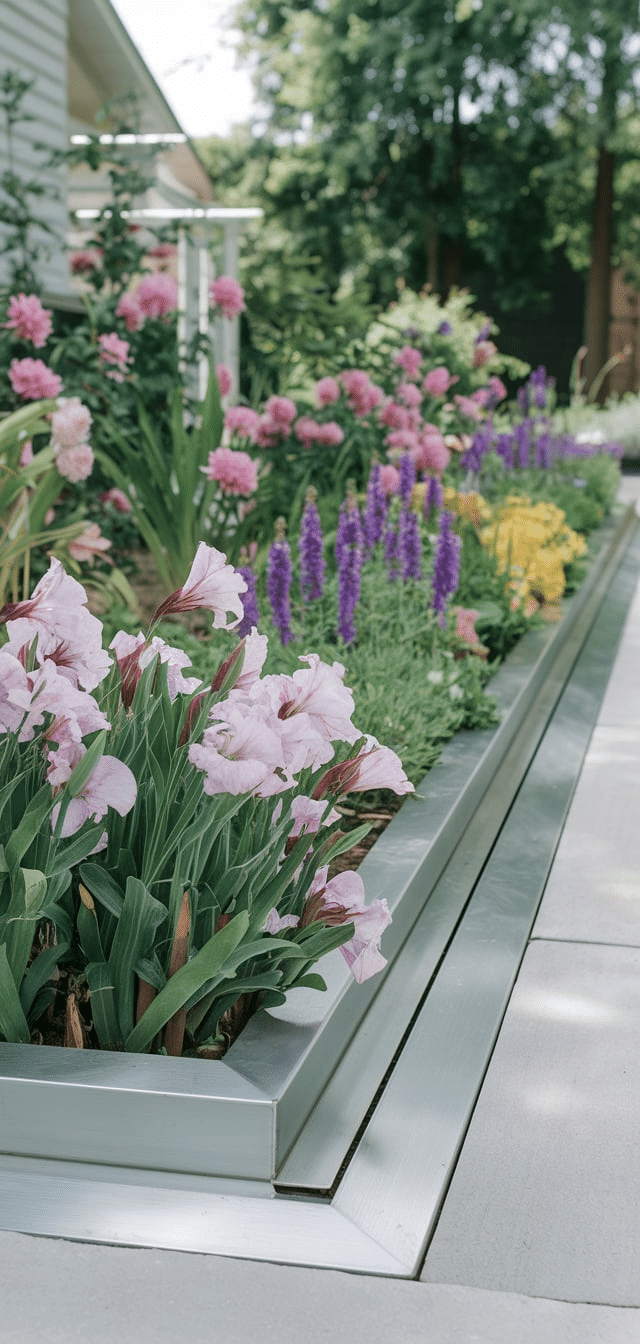
Steel, aluminum, or corten metal edging gives clean, crisp lines that work well in contemporary gardens.
Tips:
- Choose weather-resistant materials (corten rusts beautifully)
- Anchor with stakes to prevent movement
- Ideal for geometric and minimalist garden designs
13. Concrete Edging for Durability and Form
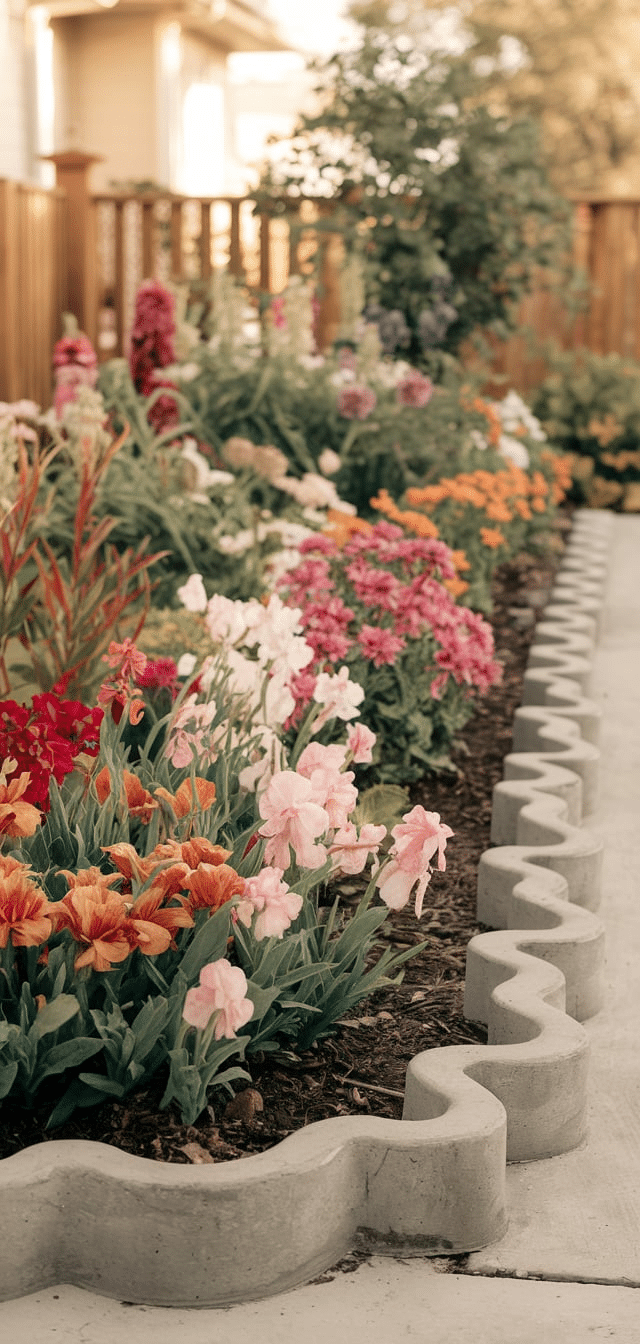
Concrete offers versatility in shape and finish, choose from precast sections or poured-in-place designs.
Tips:
- Use molds for curves or custom patterns
- Seal for longer-lasting color
- Combine with aggregate or stamping for texture
12. Wooden Garden Borders for Warmth and Texture
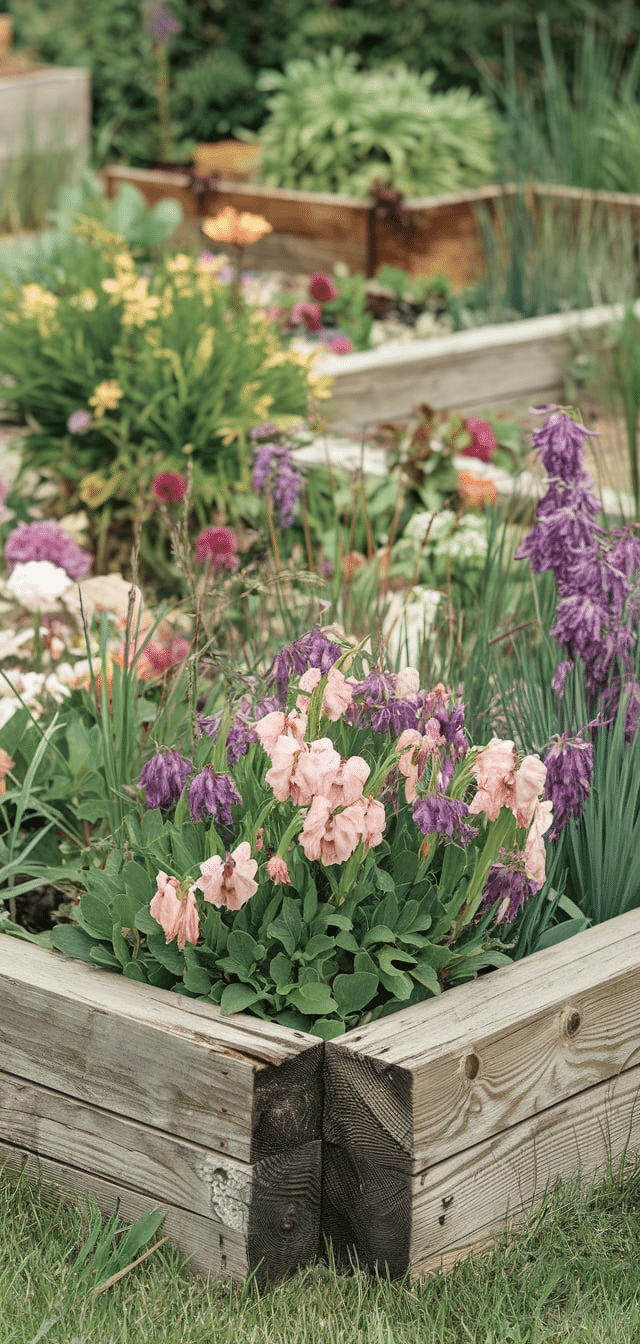
Natural wood, like cedar or redwood, adds warmth and pairs well with organic gardens.
Tips:
- Use treated or rot-resistant wood
- Install vertically (stakes) or horizontally (timber layers)
- Apply linseed oil for added protection
11. Gabion Basket Borders for Industrial Flair
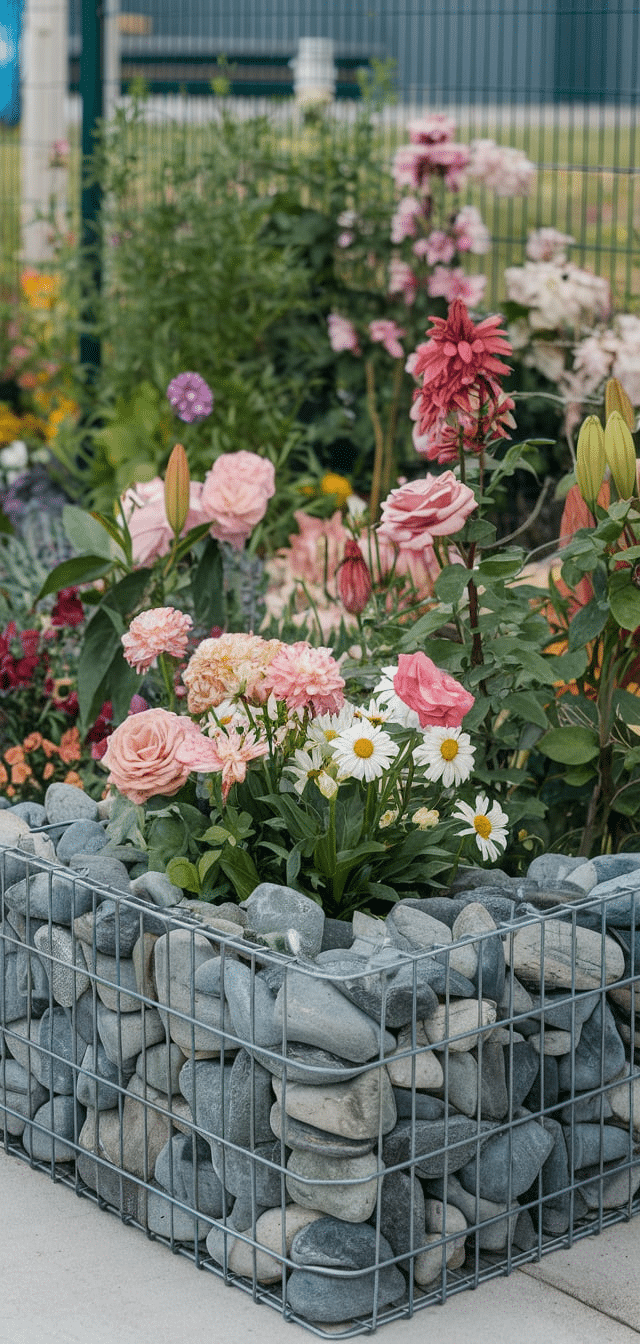
Gabion cages filled with rocks, glass, or shells make striking garden dividers with a rugged appeal.
Tips:
- Use galvanized wire for corrosion resistance
- Fill with local materials for a cohesive look
- Great for sloped gardens or retaining mini terraces
10. Paver Stone Border for Structured Elegance
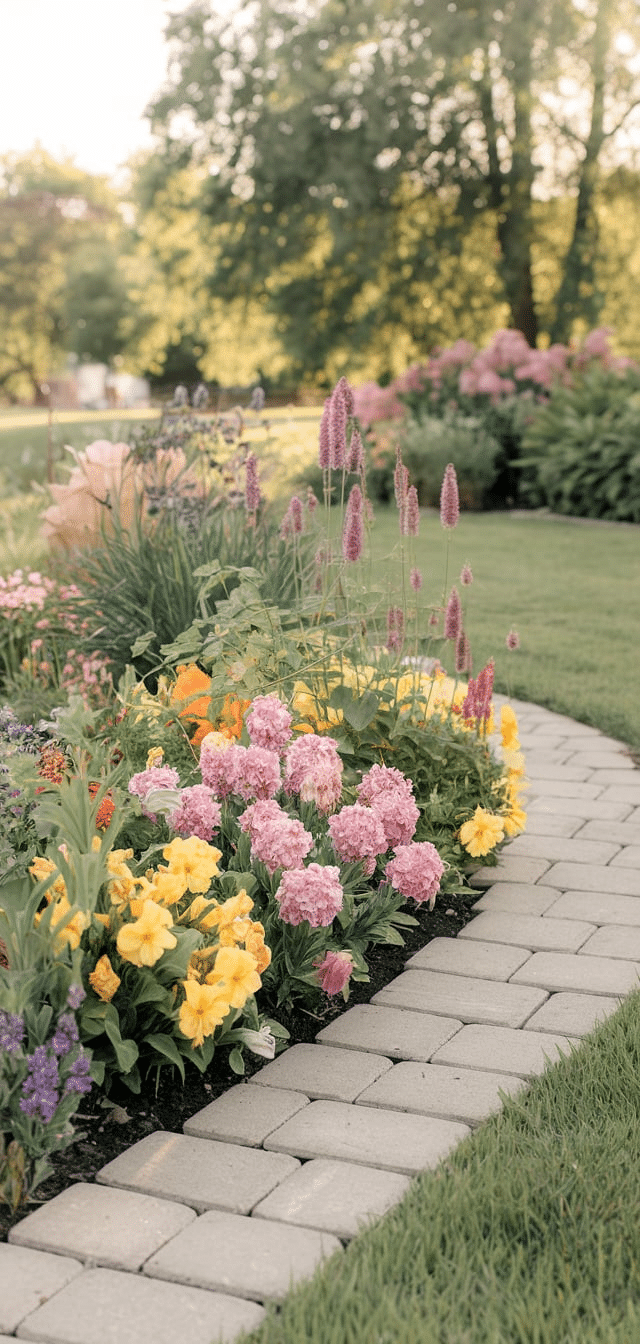
Paver stones form a solid, elevated edge that neatly contains mulch and plants.
Tips:
- Level base is key for longevity
- Create contrasting color edges to accent bed shapes
- Add polymeric sand between joints for weed control
9. Plastic Edging for Budget-Friendly Versatility
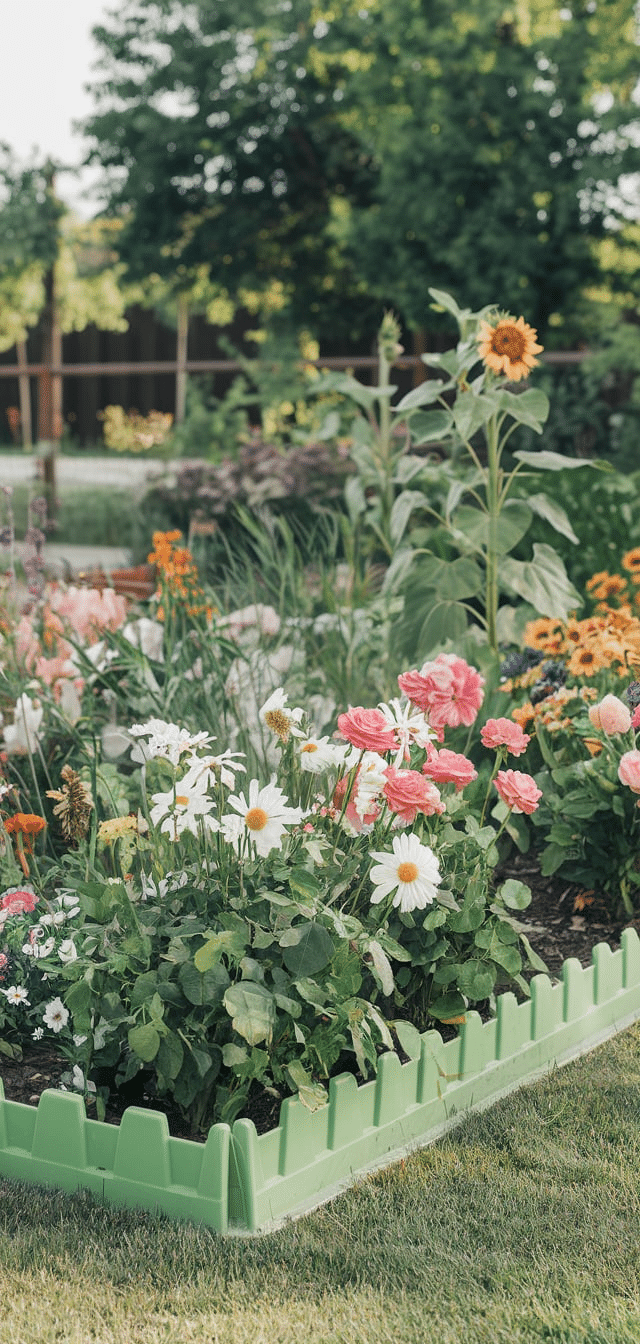
Flexible plastic edging is simple to install and adapts well to curves and organic bed layouts.
Tips:
- Choose UV-resistant varieties to avoid degradation
- Anchor deeply to prevent heaving in cold climates
- Conceal the top edge slightly under mulch for aesthetics
8. Recycled Bottle Edging for Creative Gardens

Glass or plastic bottles inverted into the soil create colorful, artistic bed borders.
Tips:
- Use uniform bottle sizes for consistency
- Fill bottles with sand or water for stability
- Works best in informal or eclectic garden themes
7. Living Plant Borders for Soft Transitions
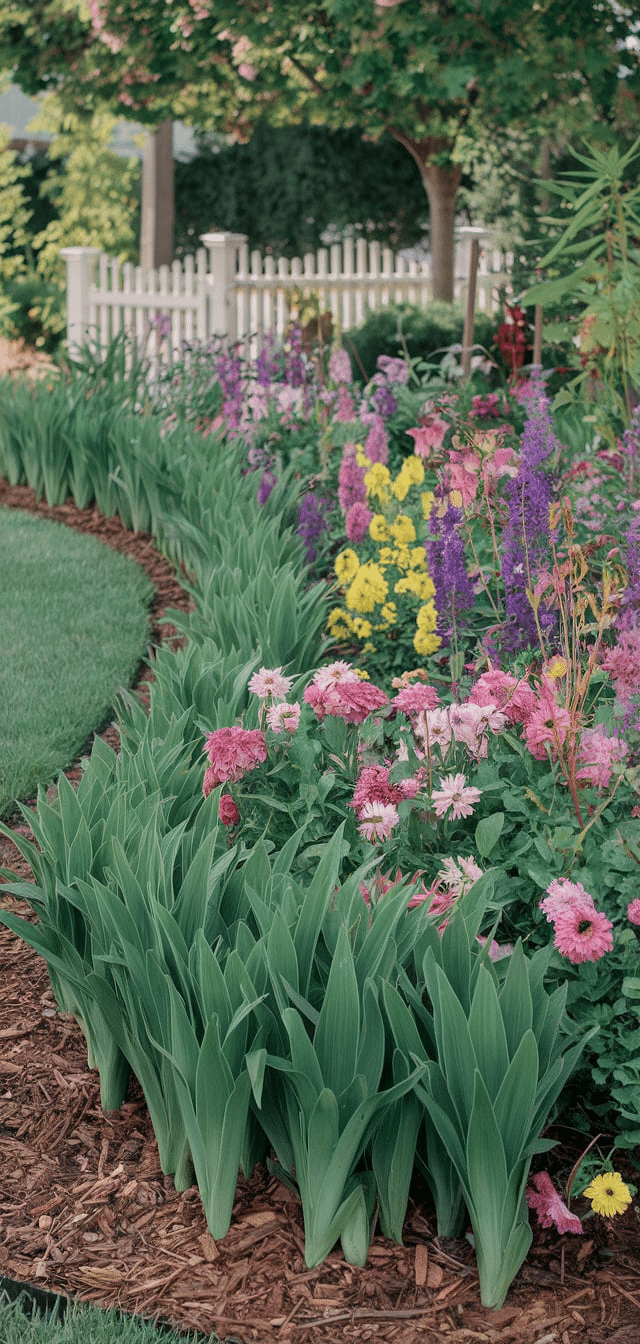
low-growing plants like lavender, boxwood, thyme, or mondo grass can form lush living edges in garden borders.
Tips:
- Space dense for full coverage
- Regular pruning maintains shape and prevents overgrowth
- Choose evergreen species for a year-round structure
6. Bamboo Edging for Tropical or Zen Gardens
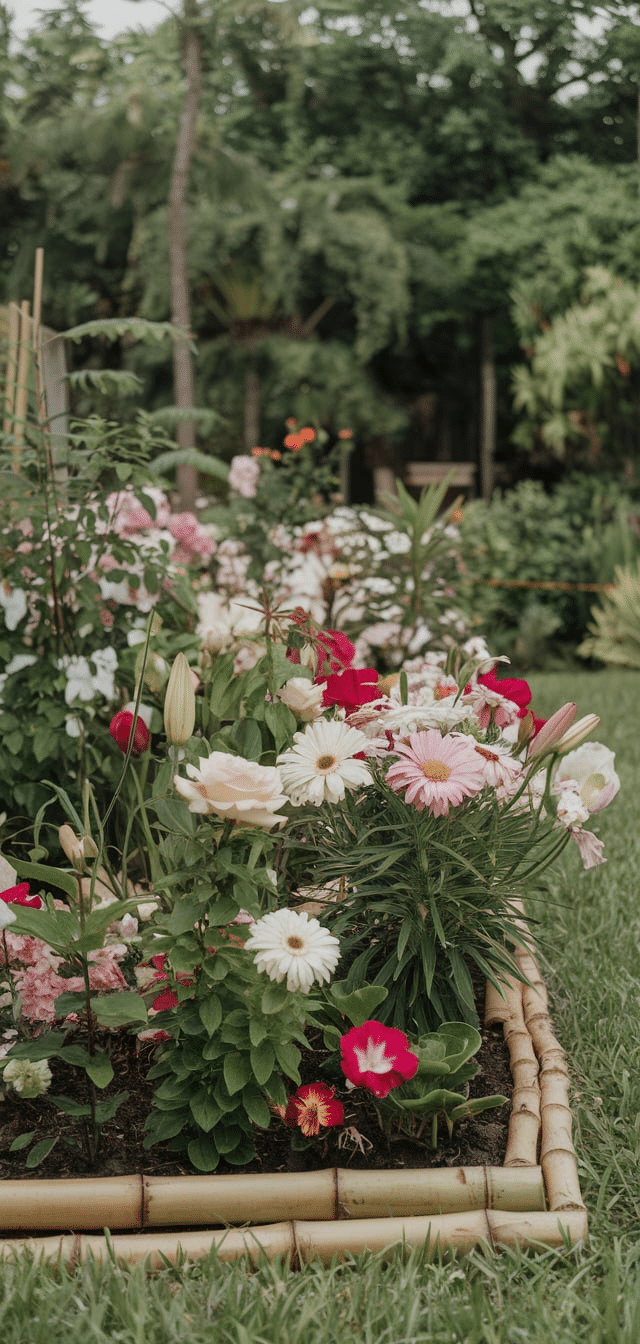
bamboo stakes, rolls, or short logs add a natural yet distinctive style to garden borders.
Tips:
- Seal ends to prevent splitting
- Anchor with steel rods or wire backing
- Excellent for Asian-inspired or water-feature landscapes
5. Cobblestone Edging for Old-World Charm
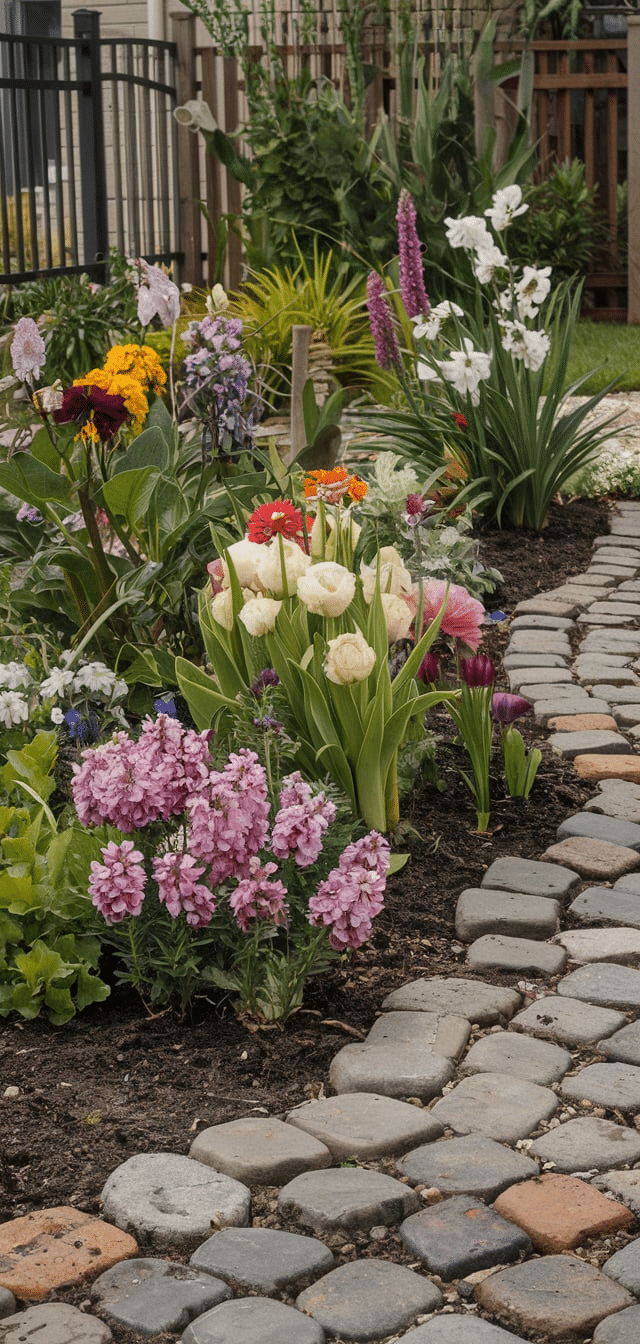
cobblestones provide rounded, traditional character, ideal for historical homes or cottage garden borders.
Tips:
- Use a staggered pattern for interest
- Secure with a cement or sand base
- Add moss or creeping ground cover for antique appeal
4. Railroad Tie Borders for Bold Framing
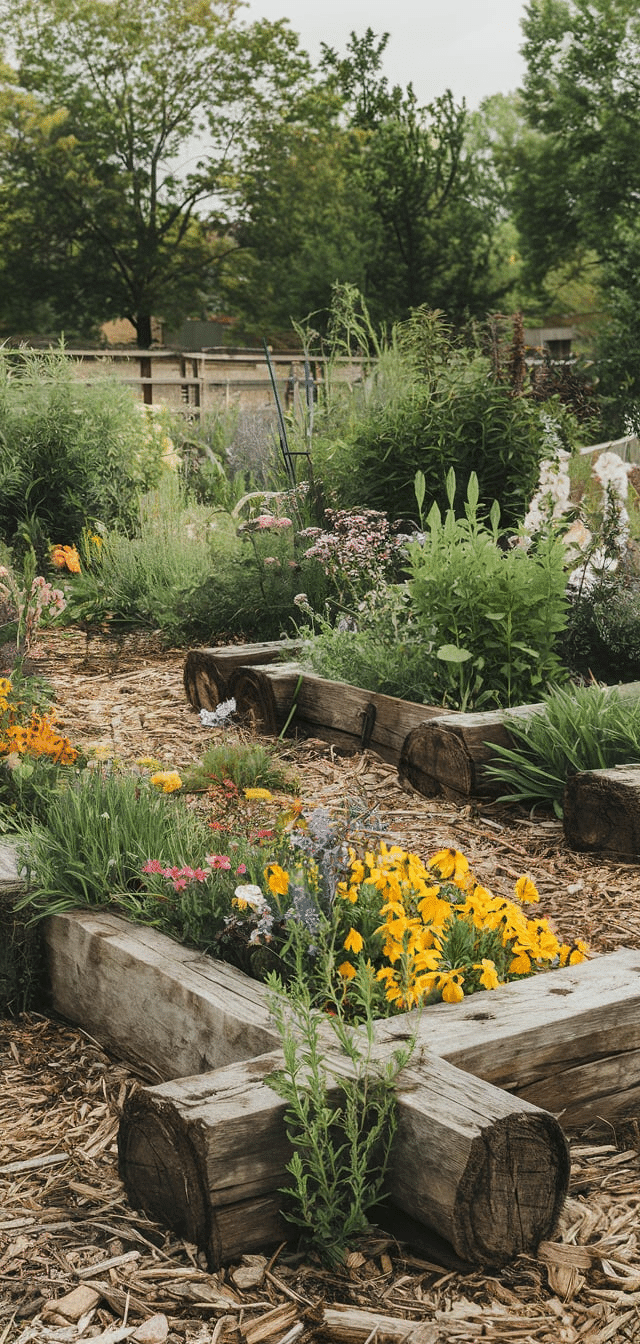
Reclaimed ties create bold, linear garden borders that work especially well in larger landscapes.
Tips:
- Ensure ties are free of creosote if used in edible gardens
- Anchor with rebar for slope retention
- Sand and seal to smooth and preserve the finish
3. Terracotta Tile Edging for Mediterranean Flair
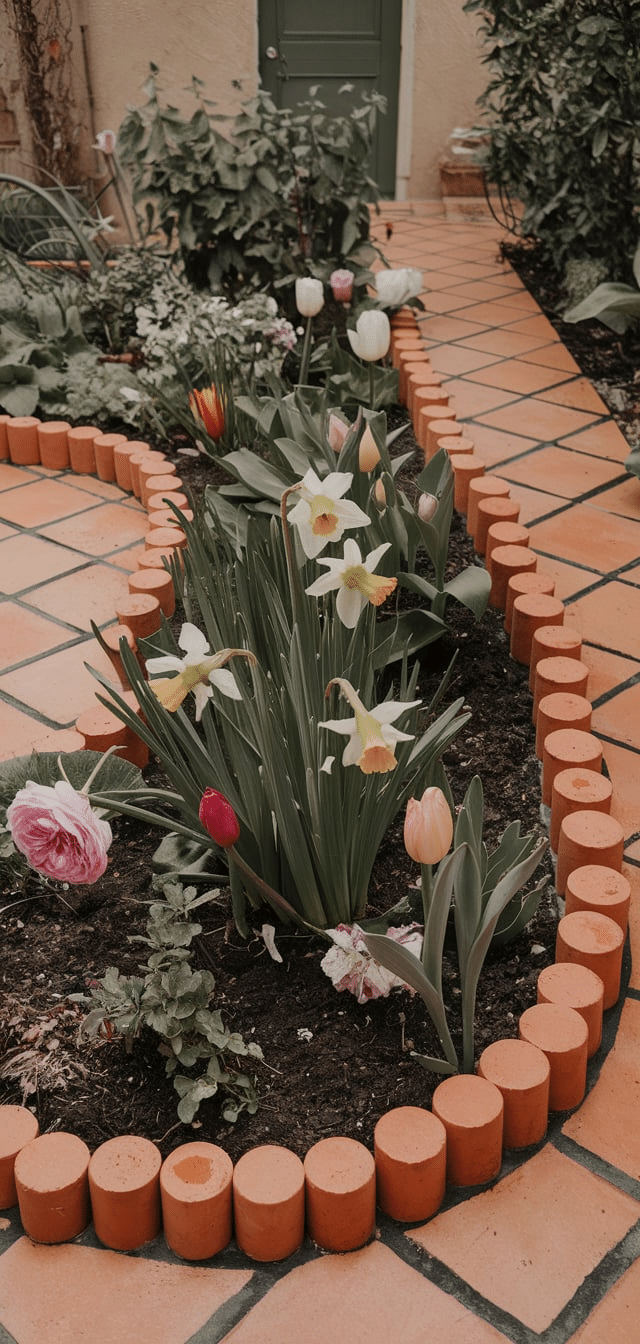
Old roof tiles or garden tiles create curved, reddish-orange garden borders that pop beautifully against green foliage.
Tips:
- Angle slightly for water runoff
- Alternate flat and upright tiles for pattern variation
- Combine with terra cotta pots for thematic consistency
2. Gravel Trench Borders for Low Maintenance
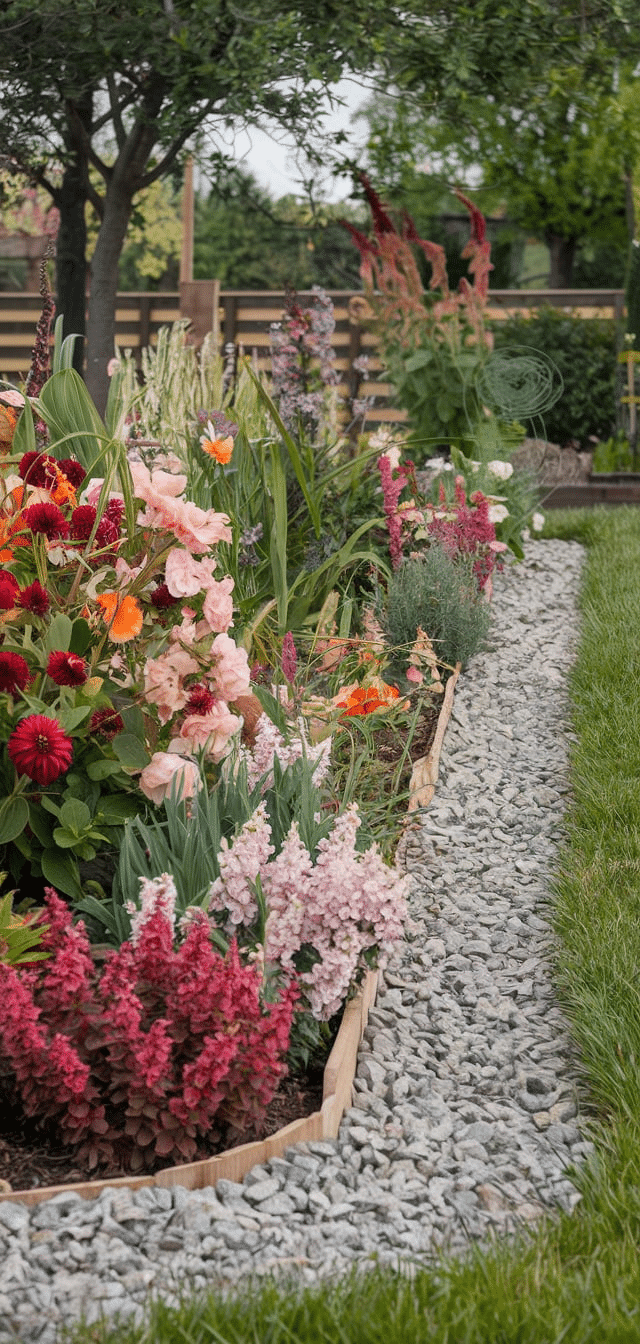
A simple gravel trench edged with metal or plastic creates an easy-care, weed-resistant garden borders.
Tips:
- Dig 4–6 inches deep, line with landscape fabric
- Use pea gravel or crushed stone for texture
- Add edging lights for functional beauty
1. Log Slice Edging for a Woodland Look
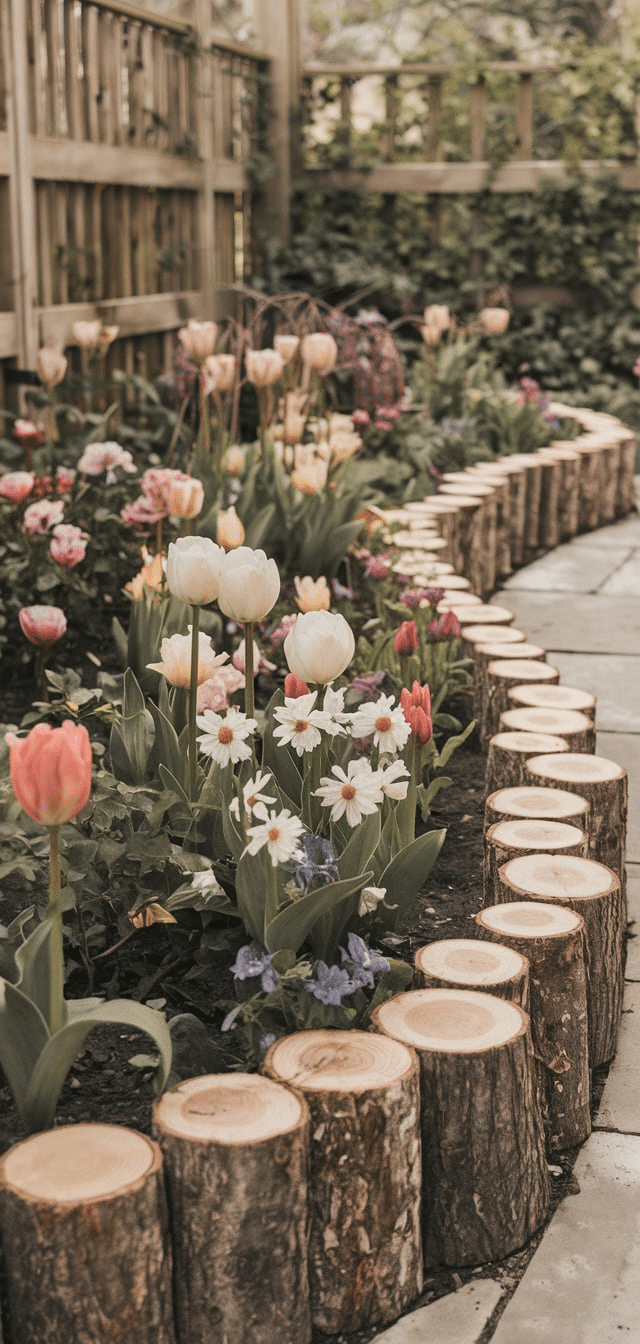
Bright wildflowers like cosmos and marigolds bring cheerful pops of color to garden borders.
Tips:
- Use rot-resistant wood like cedar or oak
- Treat with sealant to slow decay
- Vary the height for a natural, rustic effect
Conclusion
These 16 detailed garden borders edging ideas provide solutions for all styles, budgets, and climates. With a well-constructed flower bed border, your garden transforms into a defined, elegant, and manageable outdoor haven.





